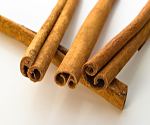Sell similar like this, 5 gallon.
| $29.99+shipping($12.99) |
These trees are cutting.
- Reduce the time to flowering.
- Shorten the breeding fruit.
- Beacuse you have a cutting tree.

Sell similar like this, 5 gallon.
These trees are cutting.
|
|||
 |
Cinnamomum aromaticum Cinnamomum aromaticum is a close relative to Ceylon cinnamon .Whole branches and small trees are harvested for cassia bark, unlike the small shoots used in the production of cinnamon; this gives cassia bark a much thicker and rougher texture than that of true cinnamon.Most of the spice sold as cinnamon in the United States . is actually cassia. In some cases, cassia is labeled "Chinese cinnamon" to distinguish it from the more expensive Ceylon cinnamon (C. verum), which is the preferred form of the spice used in Mexico, Europe and Oceania."Indonesian cinnamon", also referred to as C. burmannii, is also commonly sold in the United States where it is labeled only as cinnamon. |
|
|
||

|
||
 |
||